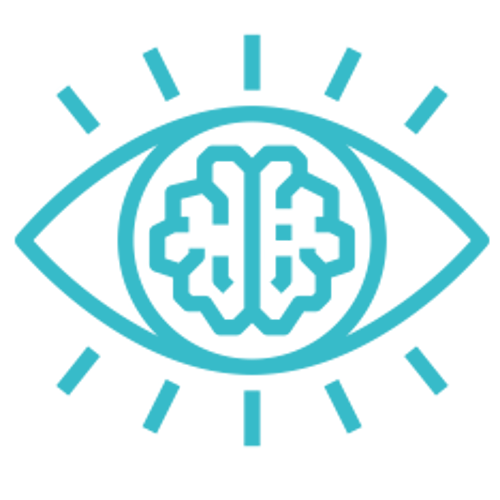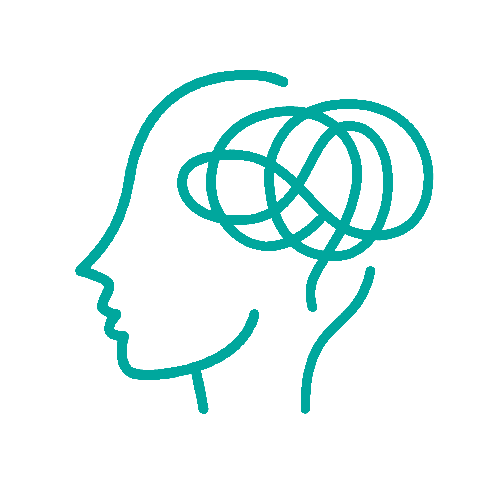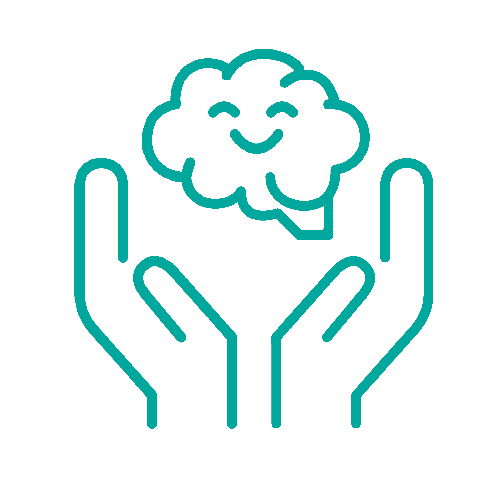If you’ve ever found yourself pondering the roots of eating disorders, you’re not alone. The topic is as complex as it is crucial, especially for those navigating the maze of personal or familial struggles with food and body image. In this blog, we’re exploring what an eating disorder is? & are eating disorders genetic? understanding the biological and environmental roots that underlie these complex mental health conditions.
What is an eating disorder?
An eating disorder is a serious mental health condition characterized by unhealthy eating behaviors that significantly impact an individual’s physical and emotional well-being. These disorders often involve extreme attitudes, emotions, and behaviors related to food, weight, and body image. There are several types of eating disorders, including an examination of are eating disorders genetic?:
Anorexia Nervosa:
Individuals with anorexia nervosa typically have an intense fear of gaining weight and a distorted body image. They may severely restrict their food intake, leading to significant weight loss and nutritional deficiencies.
Bulimia Nervosa:
Bulimia nervosa involves recurrent episodes of binge eating followed by compensatory behaviors such as self-induced vomiting, misuse of laxatives or diuretics, fasting, or excessive exercise.
Binge Eating Disorder (BED):
Binge eating disorder is characterized by recurrent episodes of binge eating, during which individuals consume large quantities of food in a short period and feel a loss of control over their eating. Unlike bulimia nervosa, individuals with BED do not engage in compensatory behaviors.
Other Specified Feeding or Eating Disorder (OSFED):
OSFED, formerly known as Eating Disorder Not Otherwise Specified (EDNOS), encompasses a range of eating disorder symptoms that do not meet the criteria for anorexia nervosa, bulimia nervosa, or binge eating disorder. Examples include atypical anorexia nervosa (where weight is not significantly low) and purging disorder (engaging in purging behaviors without binge eating). When examining these disorders, the role of genetics and eating disorders is often a focal point of research and inquiry
Understanding the 3 Biological Causes of Eating Disorders
Delving deeper into the biological causes of eating disorders unveils a fascinating tapestry of interconnected mechanisms that shape individuals’ susceptibility to these complex conditions. At the core of this intricate web lies a fundamental understanding of how various biological factors, including genetics and eating disorders, contribute to the onset and progression of eating disorders.
1. Neurotransmitter Imbalance: The Brain’s Chemical Messengers
Within the vast expanse of the brain, neurotransmitters reign supreme as the messengers that orchestrate communication between neurons. Among these, serotonin and dopamine emerge as pivotal players, wielding significant influence over mood, appetite, and behavior. However, when the delicate balance of neurotransmitter levels is disrupted, chaos can ensue, paving the way for the emergence of eating disorders such as anorexia nervosa and bulimia nervosa. Imbalances in serotonin and dopamine levels have been implicated in the dysregulation of appetite and mood, perpetuating harmful eating behaviors and distorted body image perceptions.
2. Genetic Predisposition: Unraveling the Genetic Code
As we peer through the lens of genetics, a compelling narrative begins to unfold. Evidence gleaned from twin and family studies suggests that genetic factors play a pivotal role in shaping an individual’s vulnerability to eating disorders, answering the question “are eating disorders genetic?” Certain genetic variations, inherited from one’s biological lineage, can confer an increased risk of developing these conditions, addressing the query “can you be born with an eating disorder?“. However, it’s essential to recognize that genetic predisposition alone isn’t determinative. Rather, it interacts intricately with environmental stressors and triggers, weaving a complex tapestry of susceptibility and resilience.
3. Dysregulation of Hunger and Satiety Signals: Hormonal Harmony Disrupted
In the intricate dance of hunger and satiety, hormones like leptin and ghrelin take center stage. These hormonal signals regulate appetite and food intake, ensuring that our bodies receive the nourishment they need to thrive. However, disruptions in these hormonal pathways can throw the delicate balance off-kilter, fueling dysregulated eating behaviors and fostering distorted body image perceptions characteristic of eating disorders. When considering the question “do eating disorders run in families?” Whether it’s an excess or deficiency in hormone levels, the consequences reverberate throughout the body and mind, shaping the landscape of eating disorder development.
Understanding the Environmental Causes of Eating Disorders
Environmental causes of eating disorders encompass a wide array of external influences that contribute to the onset or worsening of these conditions. While genetics lay a foundation, answering the question “are eating disorders genetic“. Environmental factors play a crucial role in shaping an individual’s risk for developing an eating disorder. Let’s delve into some of these influential environmental factors:
1. Societal Pressures:
In today’s culture, there’s a pervasive emphasis on thinness and unrealistic beauty standards. Media representations idolize slender figures, creating an environment where individuals feel immense pressure to conform to these ideals. This societal pressure can breed dissatisfaction with one’s body and fuel disordered eating behaviors.
2. Family Dynamics:
Within the familial realm, attitudes and behaviors surrounding food, weight, and body image wield significant influence. Parents who model restrictive dieting or make critical comments about weight can inadvertently contribute to their child’s distorted relationship with food. Family environments that prioritize thinness or place undue importance on appearance can exacerbate feelings of inadequacy and trigger disordered eating patterns.
3. Peer Influence:
During critical developmental stages like adolescence and young adulthood, peer groups hold considerable sway over an individual’s perceptions of themselves and their bodies. answering the question “are eating disorders genetic,” environmental factors such as societal pressures also contribute significantly. Pressure to conform to peers’ eating habits or appearance ideals can foster a sense of insecurity and drive the adoption of unhealthy eating behaviors as a means of fitting in or gaining acceptance.
4. Traumatic Experiences:
Experiencing trauma, whether physical, emotional, or sexual, can profoundly impact an individual’s relationship with food and their body. Eating disorders may emerge as a coping mechanism to regain a sense of control or numb painful emotions stemming from past trauma.
5. Dieting and Weight-Control Behaviors:
In a society obsessed with thinness, restrictive dieting and extreme weight-control behaviors are rampant. Constantly fluctuating between dieting and binge eating cycles, engaging in excessive exercise, or misusing diet pills can escalate the risk of developing an eating disorder or exacerbate existing symptoms,prompting inquiry into “are eating disorders genetic”.
6. Stress and Life Transitions:
Life transitions or stressful events can serve as triggers for disordered eating behaviors. Whether it’s starting college, moving to a new city, or navigating relationship difficulties, heightened stress levels can lead individuals to seek solace or regain control through disordered eating patterns.
7. Cultural and Socioeconomic Factors:
Cultural norms surrounding food and body image, along with socioeconomic disparities, also influence eating behaviors. Limited access to nutritious food options, healthcare, and mental health services due to socioeconomic factors can exacerbate the risk of developing eating disorders, particularly in marginalized communities.
Understanding the multifaceted impact of these environmental factors is crucial for prevention and intervention efforts aimed at promoting healthy relationships with food and body image. By addressing societal pressures, fostering supportive family environments, and providing resources for coping with stress and trauma, we can work towards creating a world where individuals feel empowered to nourish their bodies and embrace their unique selves, while also exploring “are eating disorders genetic?”
Curious about the genetic link to eating disorders? Let’s explore together!
Unraveling the connection between genetics and eating disorders is a journey filled with insights into the complexities of mental health. At Uncover Mental Health Counseling, we recognize the importance of understanding this relationship, and we’re here to provide support and guidance along the way. Here’s how we can embark on this journey together exploring the question “are eating disorders genetic?”
- Let’s Start the Conversation: Reach out to Uncover Mental Health Counseling, and let’s initiate a dialogue about the role of genetics in eating disorders. Your questions and concerns matter, and we’re here to listen.
- Connect with a NYC Therapist: Our team includes compassionate NYC therapists who specialize in addressing the multifaceted nature of eating disorders, including their genetic components. Schedule a session with us to delve into the genetic factors that may influence your relationship with food and body image.
- Explore Personal Insights: Together, we’ll explore your family history, genetic predispositions, and personal experiences to gain a deeper understanding of how genetics may impact your susceptibility to eating disorders. Through this exploration, we’ll empower you to make informed choices and develop strategies for promoting your mental well-being.






































